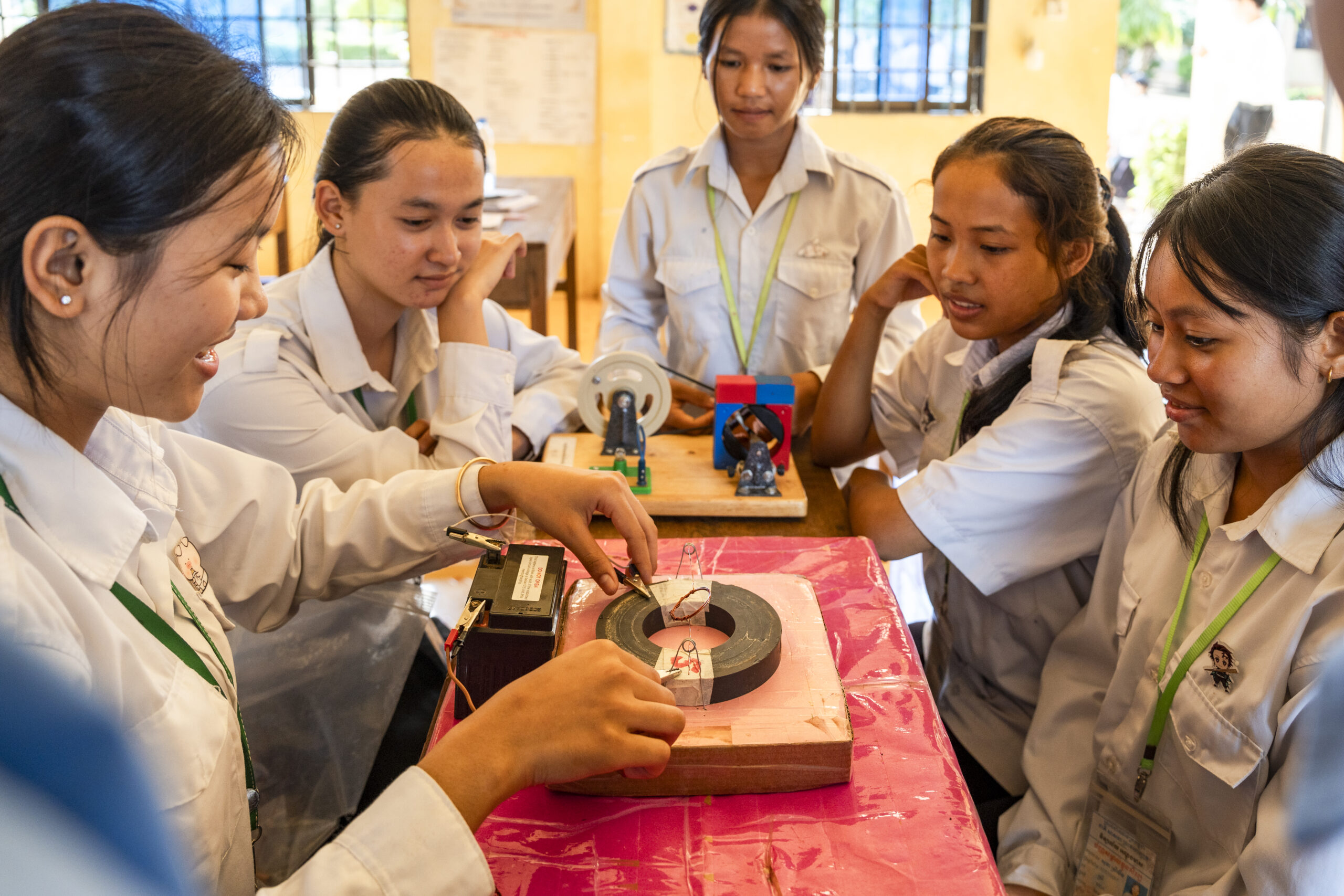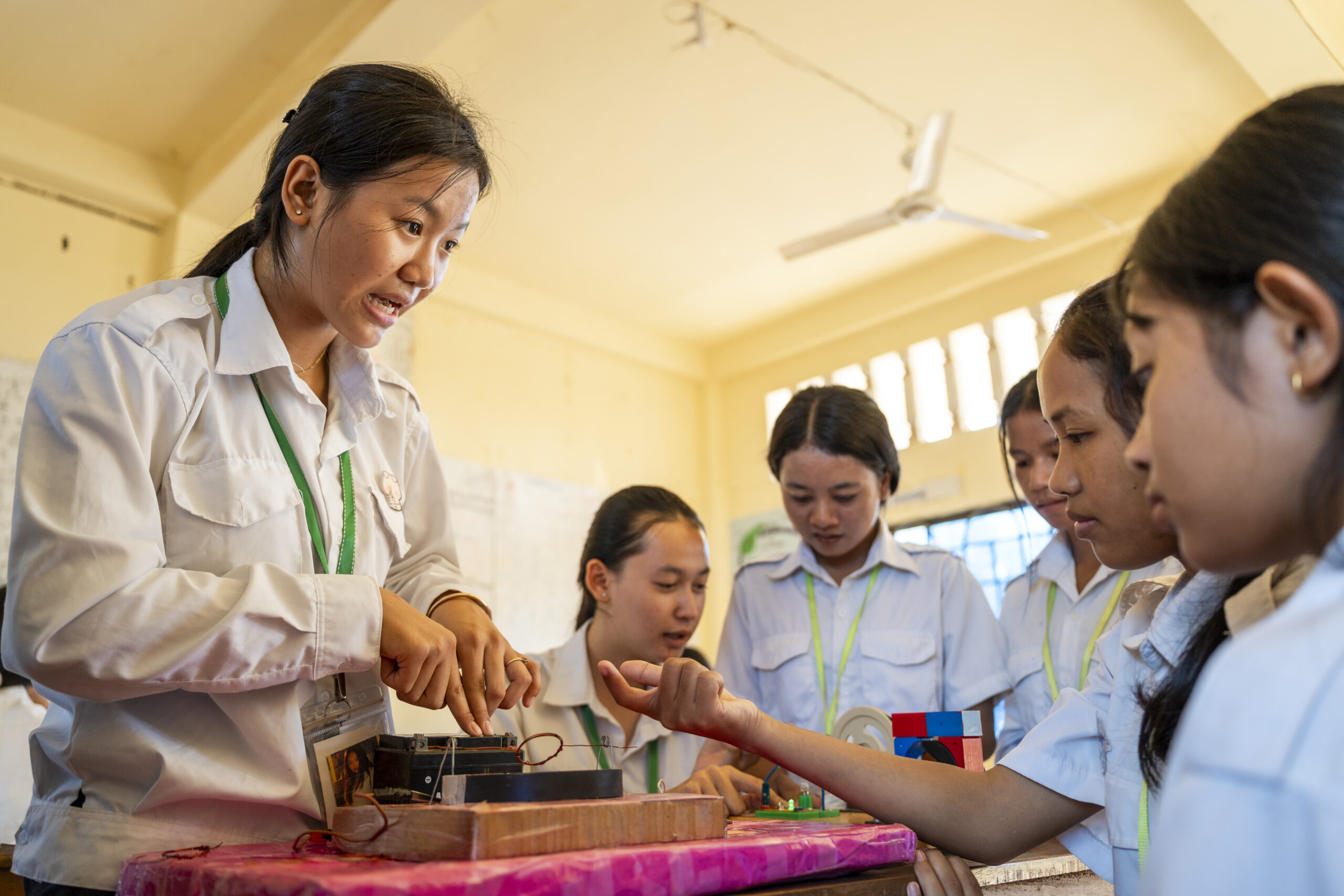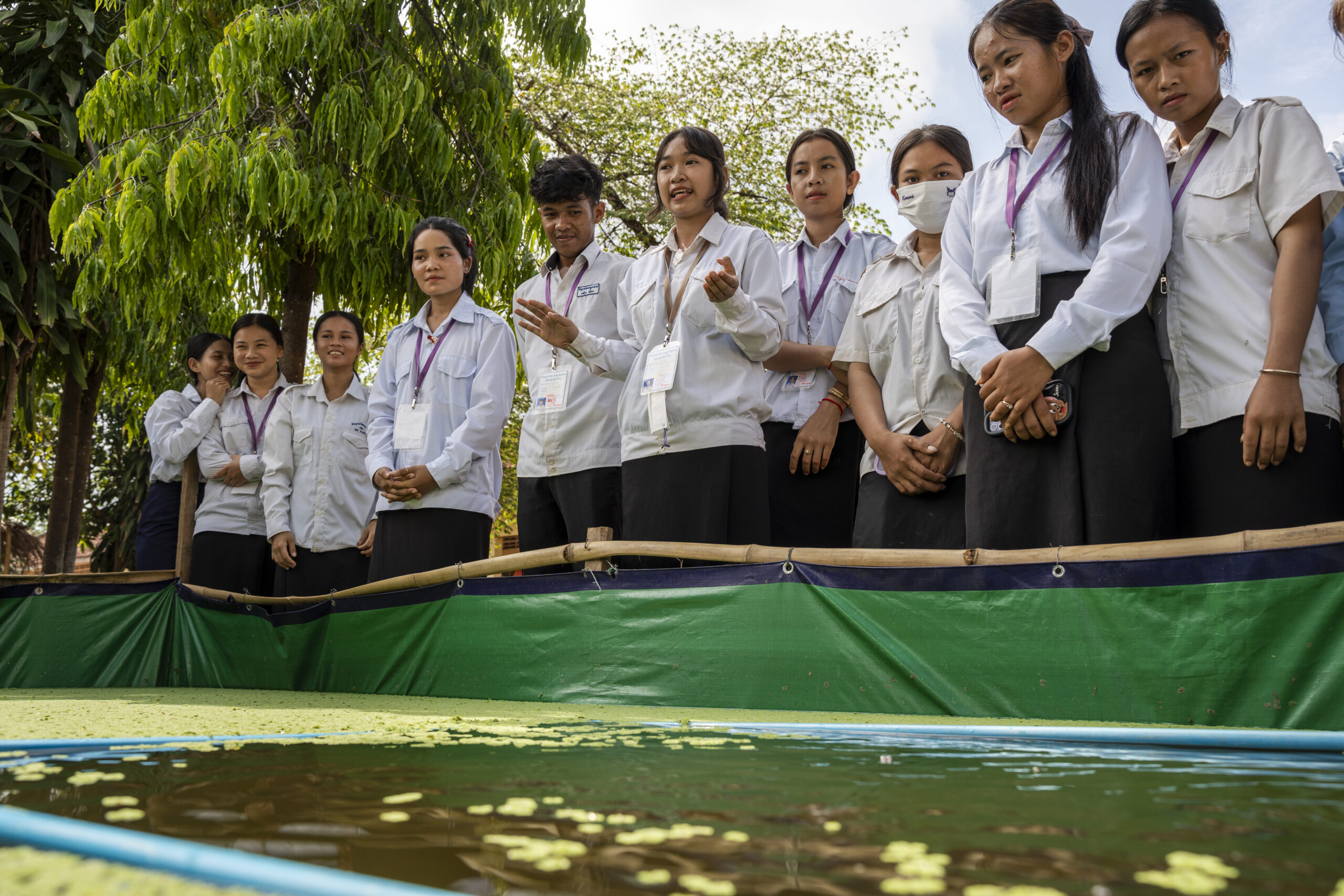A senior high school Reachny held an electromagnetic coil connects to black battery in her left hand as she explains classmates of her electrical conduction exhibition.
From physical textbooks to project exhibition, the students of Andoung Meas High School in Ratanak Kiri have their potentials showcase in various experiments from STEM to agriculture. As the 12 “A” students cheered over their physical experiment in class, their schoolmates gathered outdoors around homemade fishpond where they learnt aquaculture.




